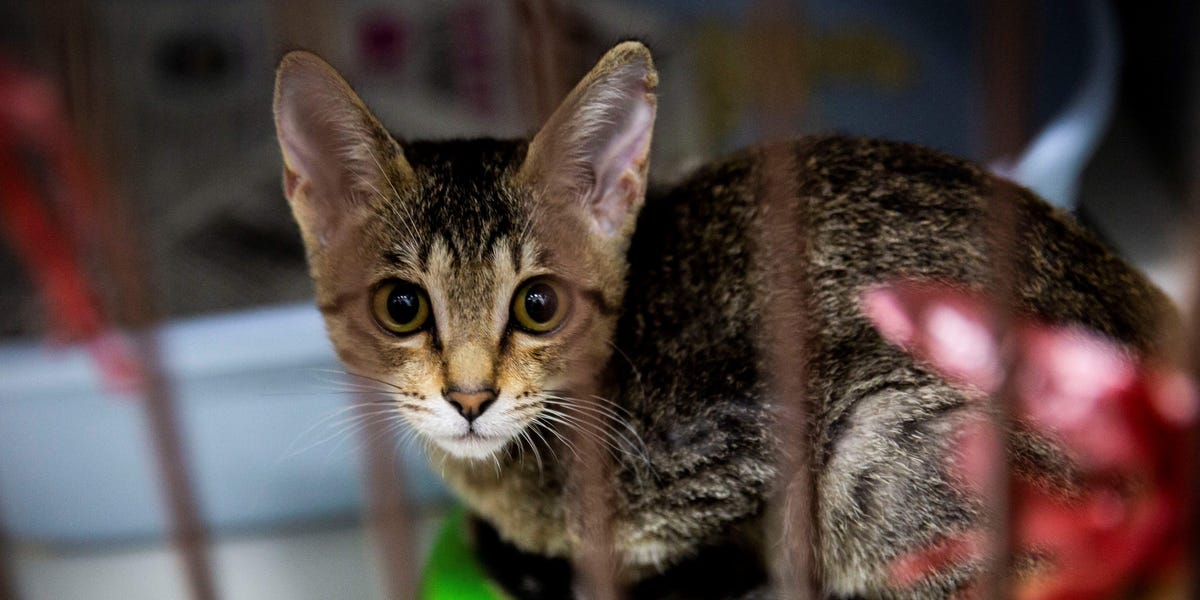Our experts answer readers’ insurance questions and write unbiased product reviews (here’s how we review insurance products). In some cases we receive a commission from our partners; However, our opinions are our own.
- Pet insurance generally only covers a cat’s visit to the emergency room, not regular vet visits.
- Some pet insurance companies offer wellness plans that cover preventative care.
- It is better to buy a cover while your cat is still young, so you will not be excluded.
- Check out our guide to the best pet insurance companies.
Over the course of her cat’s life, Joey Lusvardi has gone to the vet many, many times, not just for check-ups, but for surgeries, tests and medication. Cat behavior consultant by Class rule cats He says he’s easily spent thousands on his pig, enough to make him consider getting pet insurance in the future.
Despite its importance, cat owners are less likely to seek regular medical care than dog owners. Still about 19% of cat owners Say they had to take their cat to an emergency room or surgery center — exactly the kind of situation that cat insurance is meant to cover. As Lusvardi knows, those visits can be very expensive.
“Veterinary bills can add up quickly so insurance can be very helpful when you need it,” he said. “It also prevents you from making choices about whether or not to get your cat treated for a potentially curable disease because of financial considerations.”
What does pet insurance cover for cats?
Pet insurance, including insurance for cats and kittens, is designed to cover emergencies. Preventive care, such as annual exams and vaccinations, is usually not included.
According to Schwarzman Animal Medical Center, the most common reasons cats need emergency veterinary care include ingestion of dangerous substances, broken bones, and blocked urinary tracts. Two other common problems – kidney disease and heart failure – are treatable, but expensive to manage.
“We can do a lot for pets these days,” he says Brian Evans, veterinarian and medical director in the Netherlands, an online veterinary clinic. But “… costs can really pile up and overwhelm people, especially in emergency situations.
If you want all of your veterinary care covered by your insurance provider, consider a cat safety plan. These are insurance plans that cover preventive care and sometimes emergencies.
Lusvardi recommends looking for sample plans for any cat insurance you’re considering. That will show you exactly what is included and what is not.
“Think about what you want the plan to pay for the most and make sure the plan covers that cost,” Luvardi says.
For example, some plans cover behavioral issues such as scratching or loud amplification, but most do not. They cover other accidents, but not the illnesses that send cats to the emergency room.
When should I buy pet insurance for my cat?
Whether you’re bringing a kitten home or adopting an adult cat, it’s best to purchase pet insurance as soon as possible. This is because no insurance plans cover pre-existing conditions. Therefore, the more insurance you buy, the more potential issues can be covered.
Insuring your cat while you are a cat is ideal, but more than that 70% of cat owners Adopting or rescuing their pets is not always possible. If you are adopting an older cat, get insurance right after you bring them home.
“If you wait until you’re sick, it’s too late and you could be covered for the rest of your life,” says Evans.
Will cat insurance cover all my pet bills?
Most pet insurance plans will give you a copay, but you’ll need to pay for care up front. Plus, most plans don’t cover the full cost of care, so you’ll at least stay out of the bill.
For this reason, Lusvardi recommends putting some money into a pet-specific savings account each month. If you can save a large amount, you may not even need insurance for your cat.
“You might be better off setting aside money for that expense than paying the insurance premium every month,” he says.
How can you get insurance for your cat or kitten?
Shopping online and getting into the basics of different plans can be overwhelming. Asking for recommendations from other friends who have cats can give you a little shortcut – they can tell you which insurance companies they like (and which they don’t).
Another good source: your veterinarian. “You see a lot of people at different insurance companies, so they give you the pros and cons of each,” Luvardi says. “In addition, you get more individualized recommendations” based on your pet’s health.
Cat and cat insurance frequently asked questions
Pet insurance plans can be customized based on your budget and coverage needs. Consider your cat’s breed and health concerns and compare policies from multiple providers to find the policy that best suits your needs.
The average vet can charge up to $200 for routine care of a cat or kitten. Pet insurance can reduce these costs or spread monthly premium payments over time.
You can expect average pet insurance policy costs to start around $10.85 for a cat, while dogs start at $19.93.
Watch Now: Top Videos from Insider Inc.
Loading…
